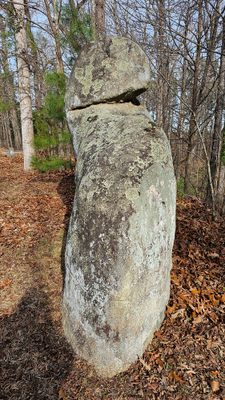About
Hidden inside a church cemetery is a Native American carving on an eight-foot-tall rock, marking the forgotten history of this area in southwest Atlanta. Long before the city took shape, members of the Creek nation settled here along the Chattahoochee River. The Native American town was known as Oktahatalofa or Sandtown.
An important trail crossed this area connecting Sandtown to Buzzard Roost or Sulecauga. The trail ran east-west to the south of the Chattahoochee River. To the west, it led to the Coosa River in Alabama. To the east, it led into what is now Dekalb County.
In the 16th century, Creek artisans carved this boulder with an eye. The boulder served as a trail marker and designated the entrance into Oktahatalofa (Sandtown). The immediate area was a frontier Creek town until the area was ceded to Georgia county governments in 1821.
Today the church prominently displays the name Owl Rock, but little fanfare is made of the titular carving. Tucked behind the church, inside its cemetery, and surrounded by new and old headstones, the petroglyph sits unmarked along the tree line.
While the fence encircling the cemetery remains closed, the gate is left unlocked so explorers can pay respects at the gravesites and visit the enigmatic Owl Rock.
Related Tags
Know Before You Go
The gate to the cemetery is unlocked for visitors of the gravesites and those wishing to explore Owl Rock.
Community Contributors
Added By
Published
December 14, 2023





















































